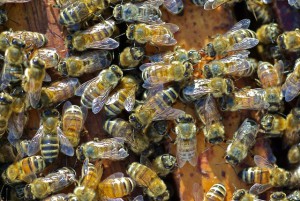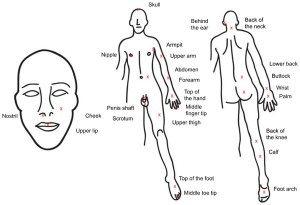Nipple, penis, or nostril — what’s the most painful place to be stung by a bee? (The answer might surprise you.)
Posted on Categories Discover Magazine

Photo: flickr/forevertrusting
[Note from the authors of “Seriously, Science?”: After nine years with Discover, we’ve been informed that this will be our last month blogging on this platform. Despite being (usually) objective scientists, we have a sentimental streak, and we have spent the last few days reminiscing about the crazy, and often funny, science we have highlighted. Therefore, we have assembled a month-long feast of our favorite science papers. Enjoy!]
In the 1980s, a man named Justin Schmidt invented the Schmidt pain index, which measured the painfulness of stings from 78 species of insects on a scale of 0 to 4 (the only stings that rated 4 were the bullet ant and the tarantula hawk). Of course, pain is subjective, so Schmidt rated all of the stings himself. In that tradition, the author of this study hypothesized that the pain level of a sting also depends on its location on the body. He tested this hypothesis by — you guessed it — getting stung. A lot. Turns out that the most painful location for being stung by a bee is on the nostril, followed by the lip and the penis. Yup, the penis.
Honey bee sting pain index by body location
“The Schmidt Sting Pain Index rates the painfulness of 78 Hymenoptera species, using the honey bee as a reference point. However, the question of how sting painfulness varies depending on body location remains unanswered. This study rated the painfulness of honey bee stings over 25 body locations in one subject (the author). Pain was rated on a 1–10 scale, relative to an internal standard, the forearm. In the single subject, pain ratings were consistent over three repetitions. Sting location was a significant predictor of the pain rating in a linear model (p < 0.0001, DF = 25, 94, F = 27.4). The three least painful locations were the skull, middle toe tip, and upper arm (all scoring a 2.3). The three most painful locations were the nostril, upper lip, and penis shaft (9.0, 8.7, and 7.3, respectively). This study provides an index of how the painfulness of a honey bee sting varies depending on body location.”
Related content:
NCBI ROFL: Is that bee on crack? Oh, wait…it is.
Honeybees do the “Mexican wave”!
How much cocaine can a honey bee take?
